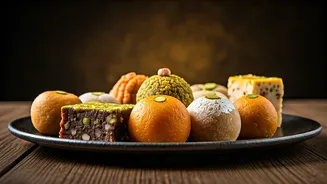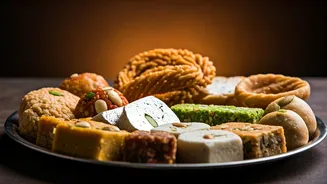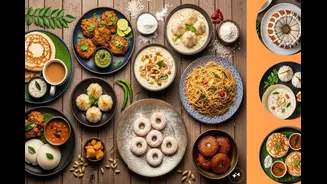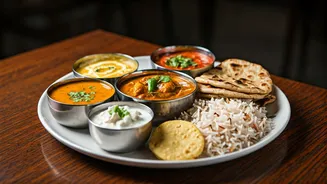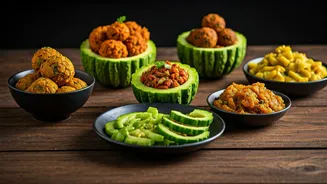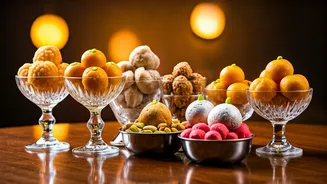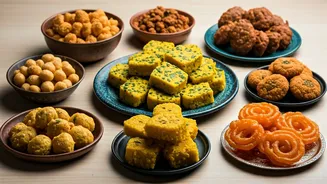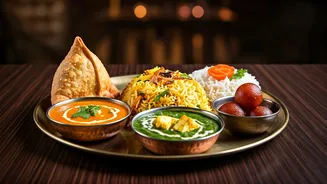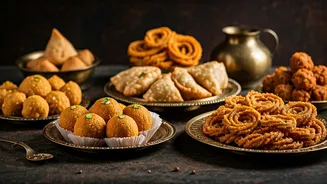Sweet Beyond Expectations
The realm of Indian sweets is vast, a vibrant tapestry woven with countless flavors and textures. While the popularity of laddus and murukkus is undeniable,
they represent only a fraction of the sweet treasures that India has to offer. The culinary landscape is rich, spanning various regions, each boasting unique specialities. Consider the diversity: the creamy rasmalai of Bengal, the crunchy jalebis of North India, and the rich payasam variations down south. Each sweet tells a story of cultural heritage, culinary innovation, and a profound appreciation for all things sweet. Exploring this panorama is an adventure, a delightful journey that promises new experiences for every palate. Delving into this expansive world unveils a world beyond the already known and allows for an even deeper appreciation for the sweet traditions of India.
A Journey Southward
The southern states of India present a delectable showcase of sweet treats, distinct in their ingredients and methods of preparation. Payasam, often made with rice, milk, and sugar, takes on countless forms across the region. The addition of vermicelli, lentils, or even fruits like mango and pineapple creates variety. The sweet Pongal, a rice pudding consumed during the harvest festival, is another iconic South Indian dessert. Flavored with jaggery, cardamom, and nuts, it embodies the spirit of celebration and abundance. These sweets provide a glimpse into the culinary ethos of the South, representing traditions and time-honored recipes that offer comfort and joy, reflecting the local tastes and ingredient availability.
North's Sweet Delights
Moving northward, the sweet dishes of India undergo an evolution, reflecting the influence of different cultures and climates. Jalebis, with their crispy exterior and syrup-soaked center, are a quintessential North Indian treat, perfect for any occasion. The creamy, rich halwas, crafted from semolina, carrots, or other ingredients, offer a symphony of textures and flavors. Then there is the gulab jamun, deep-fried milk balls soaked in a sweet syrup, a delightful indulgence. These sweets present a sweet tapestry of ingredients and influences, revealing a culinary history that is rich and diverse. They offer a flavorful glimpse into the North Indian lifestyle, highlighting communal sharing and a love for foods that are sweet and comforting, enjoyed by all.
Westward Ho, Sweets!
The western region of India offers a fascinating glimpse into the diversity of the Indian cuisine. The famous modaks, small dumplings filled with coconut and jaggery, are a signature treat, especially during the festival of Ganesh Chaturthi. Shrikhand, a creamy dessert made from hung curd, is a specialty of Gujarat and Maharashtra, often flavored with saffron, cardamom, and nuts. Puran poli, a sweet flatbread stuffed with lentil and jaggery filling, shows the blend of flavors and textures. The sweets of the West mirror the region’s diverse cultural makeup. These desserts bring together local ingredients and culinary techniques, representing the spirit of the people, their celebrations, and their rich culinary heritage.
East's Sweet Embrace
Heading eastward, the sweets continue to surprise, with each state contributing its own unique creations. Bengal is celebrated for its milk-based sweets, with rosogolla and sandesh dominating the sweet landscape. These delicate treats showcase the art of Bengali confectionary, emphasizing the quality of ingredients and finesse in preparation. Odisha offers its own variations of these sweets. From traditional chhena poda to unique pithas, the eastern region provides another perspective into the varied flavours. The sweets here showcase the region's love for fresh ingredients and innovative cooking styles, telling a tale of flavors that have been passed down through generations, bringing joy to any festive time.
Beyond the Familiar
The world of Indian sweets stretches well beyond the everyday favorites, inviting exploration and new discoveries. Try exploring the lesser-known sweet shops in your city or region, or search for regional recipes online. Experimenting with different ingredients and flavors is another great way to expand your horizons. Seek out sweets that showcase locally grown fruits or spices. Attend local festivals and food events. They are great opportunities to try new sweets and learn about their cultural significance. You'll quickly find that there is a wealth of sweet experiences waiting to be explored, a journey that promises to bring new flavors to your life, and bring joy through the vast panorama of sweets.
